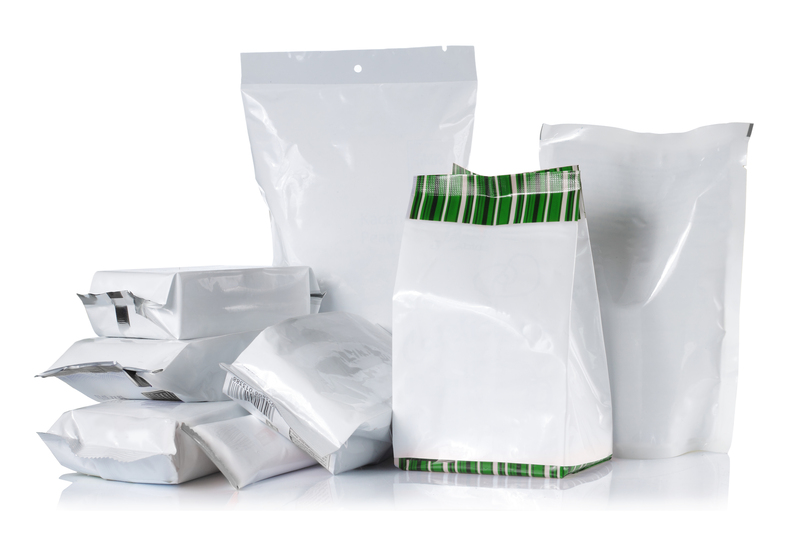Practical Advice for Handling and Throwing Away PPE Waste
Personal Protective Equipment (PPE) has become an essential aspect of safety in many environments, from hospitals and industrial sites to offices and households. However, the increase in PPE usage has led to a surge in PPE waste, posing serious environmental and health challenges. Proper handling and disposal of PPE waste is critical to ensure safety, sustainability, and legal compliance. In this comprehensive guide, we provide practical, actionable advice for the safe management of PPE waste and discuss best practices for its environmentally responsible disposal.

Understanding PPE Waste: Why Is It Important?
The disposal of PPE items like masks, gloves, face shields, gowns, and shoe covers has skyrocketed, especially following the COVID-19 pandemic. Improper handling and disposing of such waste can increase the spread of infectious diseases, pollute the environment, and endanger waste management workers. Learning how to manage PPE waste responsibly is not just a personal duty but a societal responsibility.
- Human Health Risks: Used PPE may carry viruses, bacteria, or hazardous chemicals that can infect or harm others.
- Environmental Damage: Non-biodegradable PPE, such as plastic masks and gloves, contributes to pollution, blocks waterways, and harms wildlife.
- Legal Implications: Failure to dispose of PPE waste according to regulations can result in fines and reputational damage for businesses.
The Different Types of PPE Waste
- Single-use PPE: Disposable masks, gloves, and gowns made primarily of synthetic materials.
- Reusable PPE: Washable masks, gloves, or full-body suits that require cleaning and maintenance.
- Contaminated PPE: Items exposed to infectious agents, hazardous chemicals, or biohazards.
- Non-contaminated PPE: PPE used in low-risk settings or not exposed to harmful substances.
General Guidelines for Safe PPE Waste Handling
To minimize risks related to PPE waste disposal, it's crucial to follow established protocols:
- Do not reuse single-use PPE. Once disposable PPE has been used, do not attempt to clean or reuse it as it may be contaminated.
- Avoid mixing PPE waste with general waste. Keep PPE separate to prevent accidental spread of contaminants and to facilitate specialized handling.
- Store PPE waste safely until disposal. Use dedicated bins with lids or pedal operation, ideally lined with plastic bags, to contain the waste securely.
- Practice good hygiene. Always wash hands or use sanitizer before and after handling PPE waste, especially if direct contact is unavoidable.
- Label containers clearly. If possible, mark PPE waste bags and bins as "contaminated" or "PPE waste" to ensure they are treated appropriately by all handlers.
PPE Waste Segregation: A Key Step
Segregating PPE waste is vital for proper disposal and to reduce the risk of contamination. This helps in determining the right treatment procedures and supports recycling efforts when possible.
How to Segregate PPE Waste
- Color-Coded Bags: Many organizations use specific colors for medical or hazardous waste (often yellow or red bags).
- Manage Reusable PPE Separately: Place washable masks or gowns in a clearly labeled laundry receptacle.
- Keep Contaminated PPE Apart: Separate potentially infectious PPE waste from non-contaminated items to ensure appropriate disposal.
Safe Disposal Methods for PPE Waste
Throwing away PPE waste is more complex than simply discarding it in the nearest trash bin. The correct approach depends on the type, level of contamination, and local regulations.
1. Disposal of PPE in Households
- Double-bagging: Place used masks, gloves, and wipes into a plastic bag, tie it securely, then place it in another bag and tie again to further reduce contamination risk.
- Label the bag if possible: Especially in households with infected individuals, mark bags as "PPE waste" or "infectious waste."
- Do not recycle PPE: Items like masks and gloves cannot be recycled through regular programs due to contamination risks.
- Wait before discarding: If PPE was used by someone diagnosed with an infectious disease, wait 72 hours before placing outside for collection, as recommended by many health agencies.
2. Proper Disposal of PPE Waste in Healthcare Settings
- Use appropriate bins: Hospitals and clinics should have distinct, foot-pedal operated bins lined with color-coded plastic bags.
- Follow infection control procedures: Staff should use fresh gloves and practice hand hygiene after handling PPE waste.
- Comply with legal protocols: Ensure all waste is handled according to local health and environmental regulations, which might mandate incineration or specialist removal.
3. Industrial and Construction Sites Disposal
- Collection points: Place bins at strategic locations for employees to discard used PPE easily and safely.
- Hazard identification: Clearly label PPE waste containers indicating if the PPE has been exposed to hazardous chemicals, asbestos, or lead.
- Professional removal: For hazardous PPE, contract licensed waste handlers to collect and dispose of the waste according to laws.
What Not to Do When Disposing of PPE Waste
- Do not flush PPE down toilets or drains. This causes blockages and releases plastics into waterways.
- Do not burn PPE waste at home. Burning plastics releases toxic fumes and pollutants.
- Do not toss PPE into recycling bins. Most PPE, especially single-use items, are non-recyclable and can contaminate recycling streams.
- Do not leave PPE littered in public spaces. This endangers others and the environment.
Recycling and Environmentally Friendly Practices for PPE Waste
Although most PPE waste is designed for single use and not intended for recycling, efforts are underway to improve sustainability. Certain companies and municipalities are piloting programs to collect specific types of PPE for recycling. Here are some greener PPE disposal tips:
1. Look for Specialized Recycling Programs
- TerraCycle and Similar Initiatives: Some organizations collect masks, gloves, and face shields for recycling into outdoor furniture or building materials.
- Check with Local Authorities: Certain regions provide drop-off points for used PPE waste--contact your local waste authority for guidance.
2. Use Biodegradable and Reusable PPE Where Possible
- Biodegradable masks and gloves: Choose options made from natural fibers, which break down safely in the environment.
- Fabric masks: Invest in washable, reusable masks rather than single-use alternatives.
3. Bulk Collection for Larger Organizations
- Contract waste management partners: Work with approved firms offering PPE collection and disposal to ensure compliance and environmental care.
- Educate staff: Regular training on new sustainability initiatives ensures adherence and maximizes impact.
Legal Requirements and Compliance in PPE Disposal
Different countries and regions have specific regulations regarding PPE waste management. Businesses, hospitals, and organizations must stay up to date with:
- Government guidelines: Health and environment agencies (e.g., CDC, OSHA, WHO, local EPA offices) frequently update rules on PPE handling and disposal.
- Paperwork and records: For large waste generators, maintain logs and manifests as proof of compliance with hazardous waste regulations.
- Employee training: Conduct regular training sessions for all staff on PPE waste handling procedures.
Best Practices for Cleaning and Sanitizing PPE Storage Areas
- Clean bins frequently: Use disinfectants to wipe down lids, handles, and surrounding areas at least daily, or more often in high-use environments.
- Ventilate storage spaces: Good airflow reduces the buildup of odors and helps prevent microbial growth.
- Replace liners regularly: Change bin liners promptly if they are full, damaged, or contaminated.

The Role of Community and Corporate Responsibility in PPE Waste Management
Addressing the challenge of PPE waste is not just about personal habits--it's about collective action. Communities, businesses, and institutions can work together to minimize environmental and public health risks by:
- Running awareness campaigns: Teach the public about correct PPE disposal through posters, social media, and local events.
- Providing adequate bins: Supply easy-to-access PPE waste bins in public places, workplaces, and transportation hubs.
- Developing return and recycling schemes: Collaborate with recycling companies to accept large volumes of PPE waste.
- Innovating in product design: Opt for eco-friendlier PPE wherever possible, supporting market demand for sustainable alternatives.
Conclusion: Creating a Safer, Cleaner Future with Responsible PPE Waste Management
Proper handling and disposal of PPE waste plays an essential role in protecting both public health and the environment. Whether you are a business owner, healthcare worker, or individual, following the practical advice outlined in this guide will help ensure the safe and environmentally responsible disposal of PPE.
By keeping PPE waste segregated, using the right storage methods, refraining from dangerous disposal practices, and seeking sustainable solutions, we can all contribute to cleaner communities and reduced ecological impact. Remember, the small steps we take every day in managing PPE waste have significant positive effects on the world we share.
Quick Checklist for Handling and Throwing Away PPE Waste
- Always use gloves when handling used PPE.
- Dispose of PPE in dedicated, lined bins--never in recycling.
- Practice hand hygiene before and after disposing of PPE.
- Label or mark bags containing PPE waste, especially if contaminated.
- Educate others in your household or organization on proper PPE waste disposal.
By following these guidelines, every individual and organization can play a pivotal role in minimizing the health and environmental risks associated with improper PPE waste disposal.
